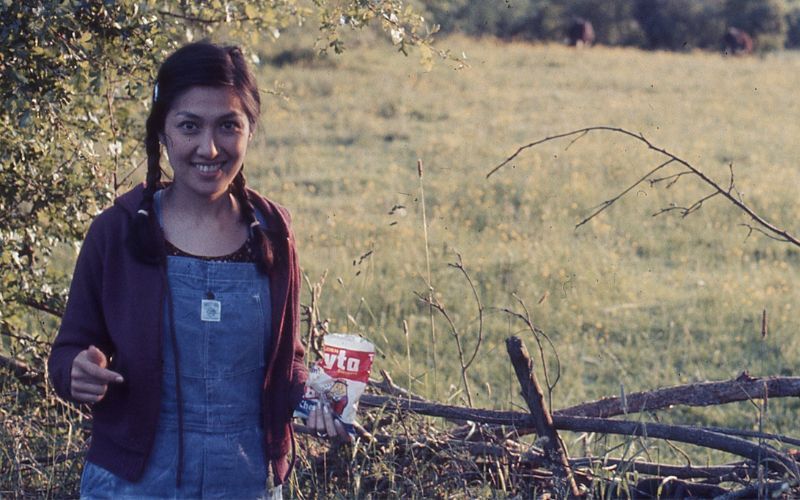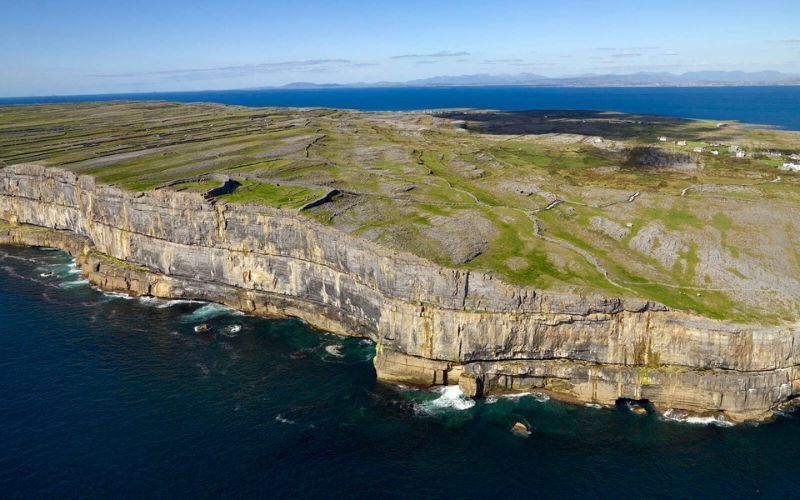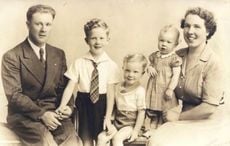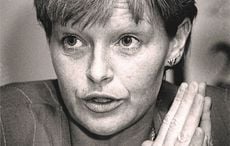In April 1977, I moved to Ireland with my new wife, Belita, with the hopes of becoming a thatcher.
I had conceived the notion after my grandmother's farmhouse - thatched for two centuries - had to be shingled with slate, as there were no more thatchers working in her locality.
She grieved the loss of a golden roof that had kept her warm in winter, cool in summer, and where songbirds nested in its eaves. Where once rain had fallen softly upon her bonnet of Shannon reeds, it now resounded off the Bangor slate like an angry drum. Her lament pulled at my heartstrings and evoked my whimsical calling.
Belita and I settled in my dad's native county of Longford, where I placed notices in a dozen provincial newspapers, hoping to find a thatcher willing to teach me the trade. Upon receiving a promising reply, we'd hitchhike the roads, never stuck for long, thanks to Belita's attractiveness and the open-heartedness of the Irish people.
After six months, I finally found a champion thatcher in Co Tyrone, who offered me a three-year apprenticeship. Not prepared to make such a lengthy commitment, I had to decline his offer, and sadly abandon my romantic dream.

Belita - with a bag of Tayto! - in Ireland. (Kevin O'Hara)
However, our stay in Ireland was far from fruitless. Belita learned how to spin wool and knit Aran sweaters, and I mastered the pouring of a perfect pint of Guinness, as a barkeep at the Longford Golf Club. We visited my relations frequently, and traveled a wealth of the country, from Cork to Donegal.
Those evenings, in far-flung parish pubs, Belita would attract attention, not just for her loveliness, but for the novelty of her Filipina features - not many Asians knocking about rural Ireland in 1977.
"From where in the world might ye hail?" the wizened old pensioners would ask her. Belita was inclined to play along. "You guess?"
The elderly bachelors would hold her by the chin and lead her to hearth-glow or window light, and appraise her as if she were a delicate piece of Belleek china.
"I'm thinking ye're a lovely senorita from Mexico. Or maybe a yellow rose from Texas," chanced one, perhaps an avid viewer of American Wild West movies aired every Sunday on Irish TV.
"Arragh, not a'tall!" bellowed his mate. "A blind man could see she's from Barcelona, with her smooth olive skin and dazzling almond eyes."
When Belita finally divulged that she was from the Philippine Islands, one ancient crow squawked, "No wonder Magellan and his crew were mad to get there!"
But not all the comments about my wife's exotic looks were pleasantries. Toward the end of our stay, we spent a few days in Galway City, where we booked into a modest B&B. Knowing that a pint differed little in price - whether served in a smoky shebeen or a grand hostelry - we opted for the lounge section at the luxurious Great Southern Hotel on Eyre Square. Taking seats by a cheery turf fire, I ordered a pint and Belita a Bailey's, and we settled in to marvel at our splendid surroundings.
Yet our enjoyable interlude was soon marred by remarks from a nearby group of drunken businessmen, some of which verged on the lewd. I finally felt the need to stand up and approach their table, asking them to kindly keep their rude comments to themselves.
That settled them down, but our pleasure in the place had been tainted, so we hurriedly set to leave. A Galway gentleman, who had witnessed our unsettling scene, stopped us at the door and apologized for the men’s behavior. He then handed me his business card, saying, "Go to our local airport at 9 tomorrow, and present this card to Grace at the front desk. There'll be a treat waiting for you both."
I thanked him and glanced down at the card: Aer Arann Airlines.
Sure enough, the next morning we were greeted by a friendly staffer who led us out to a small prop plane revving up on the runway.
"Good day," a cheerful pilot called from the cockpit. "I've been instructed to take you out to the Aran Islands. So hop aboard, we have a full day planned!"
With a disbelieving glance at one another, Belita and I joined hands and boarded, the only passengers on the tiny plane. We shortly found ourselves winging across sparkling Galway Bay toward Inishmore, the largest of the three Aran Islands. Our hands clutched in terror as our pilot made a bouncing touch-down on a strand, scattering flocks of sheep before him.

Inishmore, Aran Islands, Co Galway. (Ireland's Content Pool)
Once we disembarked, a fun-loving jarvey was awaiting us with his horse and trap. He took us on a long, circuitous route through the village of Kilronan, and up to the prehistoric cliff-side fortress of Dun Aengus, clinging off a 500-foot precipice. A delicious meal of fish and chips followed at Joe Watty's Pub, all gratis!

Dun Aengus, Inishmore, Aran Islands, Co Galway. (Ireland's Content Pool)
On our return to Galway that evening, the pilot flew us over Inishmore's neighboring islands - Inishmaan and Inisheer - where he eagerly pointed out ringed forts and other megalithic ruins.

Aerial view of Inis Oírr (Inisheer), Aran Islands, Co Galway. (Ireland's Content Pool)
"Since it’s such a grand evening," said our tour guide, "let's fly along the Clare coast, so you can have a birds-eye view of the Cliffs of Moher, and the rocky Burren beyond."
Belita and I gazed out in wonderment at the sweeping vistas below, feeling like crowned royalty throughout the thrilling flight.
Once back at our B&B, we were still in awe over our unexpected outing.
“How will we ever top that?" asked Belita, twirling before me.
I caught her by the arm. "Why don’t we go back to the Great Southern tonight?"
She gave me a quizzical look: "The Great Southern?"
"Yes," I answered her with a sheepish grin. "But tonight you should wear a mini-skirt!"
A sharp poke to the ribs was my bride's only reply.
Kevin O’Hara is the author of “Last of the Donkey Pilgrims: A Man’s Journey through Ireland,” which chronicles his 1,800-mile journey around the coast of Ireland in 1979 with a donkey and cart. This story first appeared in The Berkshire Eagle, Pittsfield, MA. on St. Patrick’s Day, 2019.




Comments